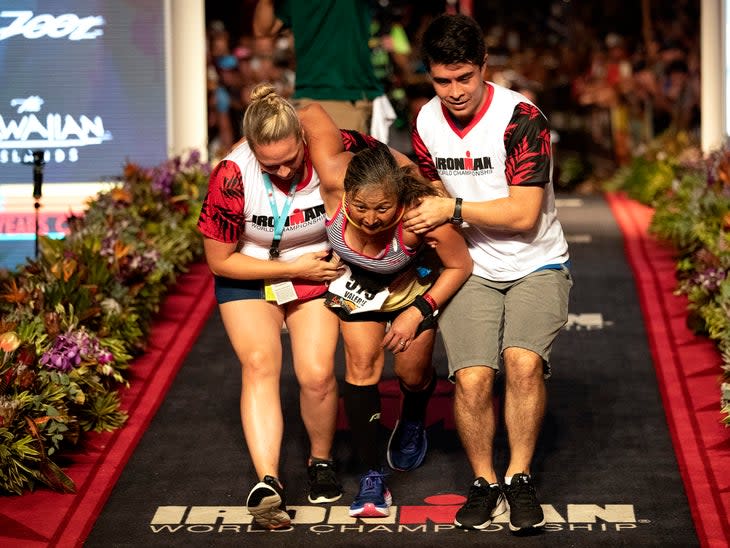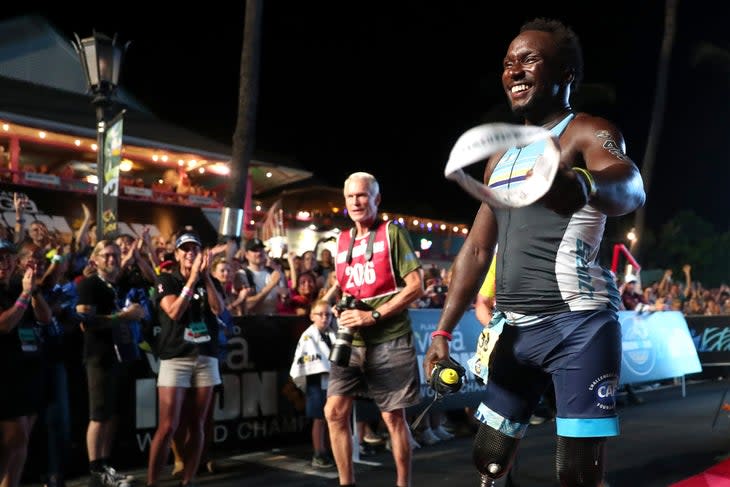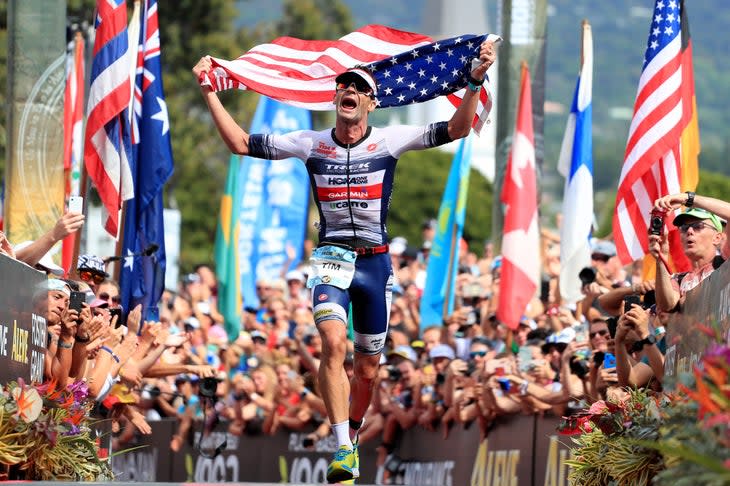Characters Of Kona: Ali’i Drive
This article originally appeared on Triathlete
As the sun sets on pre-race week festivities and rises on The Big Day, athletes begin to look with anticipation toward one of the longest days of their lives. Visualization is important--as anyone who has come this far can attest--and so athletes at the Ironman World Championship will mentally practice this race in their heads once, twice, maybe even a dozen times. Racers have probably physically practiced the course too, as many have arrived on the island before their race to train on the course and immerse themselves in the full Kona experience.
For those who get to follow along at home or even in person, there exists an idyllic version of what Kona actually feels like: the beautiful underwater shots of people-as-fish swimming overhead, quick 30-second clips of athletes soaring across the Queen K and the virtuous 26-mile journey pocked with marks of brief (but worthwhile) intimate introspection. It all seems so beautiful, every second of it.
The reality of the Kona course is that it's mostly unbearable. There are brief moments of clarity and symmetry--like in the swim, or in Hawi, or for masochists in the Natural Energy Lab--but 98 percent of the Ironman Hawaii course is agony.
It's a big, big part of why there are so many terrible blow-ups out on the Queen K. Most of the bike ride is like riding on Mars, and after leaving town, so much of the run is course is spent running on the side of a hot, barren highway shoulder. Pictures can make the Queen K look majestic and the suffering out there noble, but when you're left counting the endless row of power line poles in an effort to slow the retreat of your disintegrating mental state, the dignity of the struggle is often lost. Soon the mind slips, and the body quickly follows.

So why do athletes love this race? Why is Kona a symbol of the spirit of the sport if the spirit is so mean and unforgiving? Why do people finish this race and come back?
Part of it is because athletes have short-term memories--that's a big part of why they're in endurance sports. Triathletes have to wake up every single day and wipe the slate clean, temporarily forgetting how incredibly hard the previous day's workout was, in order to just get through the next one.
But the real reason Kona is burned into the minds of each finisher (in a good way)--the real reason people turn themselves inside out, just to come back--comes into focus later.
It begins after taking a right turn off of the soul-crushing Queen K Highway with just over a mile to go on the run. Heading down Palani Road, athletes can probably hear something in the distance. If it's still light out, the roar is probably very loud; if it's dark, the bright light acts as their beacon. Instead of going straight toward the sound and the glow, the Kona course has one last laugh at the athlete's expense, and it temporarily turns them away.
After a short stretch on the entirely unnecessary Kuakini Hwy, athletes take a right--just across from a gas station (a gas station!)--and another right, before finally ending up on The Whole Reason For All of This: Ali'i Drive.

On almost any other day of the year, Ali'i Drive is an unremarkable stretch of road by Hawaiian standards. One side has a short, decent view of the ocean blocked by a lava rock wall. The other side is basically made up of strip malls in various shapes and sizes. There are T-shirt shops and mostly forgettable restaurants; there are galleries and snorkel rentals. But since 1991, for one day in October each year, Ali'i is magic.
Ali'i Drive is Mike Reilly's turf. It's been his every single year since the first one in Kona, and he knows it better than anybody else in the world. Reilly considers Ali'i a piece of sacred real estate--if you mispronounce it, he'll quickly correct you. As someone who sees Ironmen and Ironwomen at their absolute limit, he truly believes that on Ali'i, people shapeshift into who they really are. All of the pre-race posturing and nerves and fancy gear and training programs simply vanish right in front of Reilly's eyes. And in front of the eyes of thousands of screaming, cheering spectators who just want you to make it home.

Tim O'Donnell has another perspective – he has been the one running toward Reilly, being carried along through the funnel of the crowd's excitement. And yet, on his way to his second-place finish in 2019, he could barely enjoy his run down Ali'i Drive, because he had seen so many athletes before him come so close to the line and not make it. Ali'i can also be cruel like that. For him, it wasn't a podium until he crossed the line.
Otherwise, Ali'i Drive means history and celebration for O'Donnell. It's pure excitement and love and joy from Irontown on this usually unexceptional stretch of road. O'Donnell knows that this race is on an island in the middle of the ocean, and that it's no easy task for the crowd to arrive to this very spot to cheer. He knows that everyone needs to have a real reason to be in Kona. Be it athletes, friends, family or fans, there's got to be an unparalleled love for the sport to come so far, just to get to this place. This is why people go through everything horrible that comes before; this is why Ali'i Drive is the point.
Can't get enough Ironman World Championship coverage? Visit our Kona Hub for news, analysis, history, photo galleries, and so much more - new stories added daily from our team on the ground at the Big Island.
For exclusive access to all of our fitness, gear, adventure, and travel stories, plus discounts on trips, events, and gear, sign up for Outside+ today.

